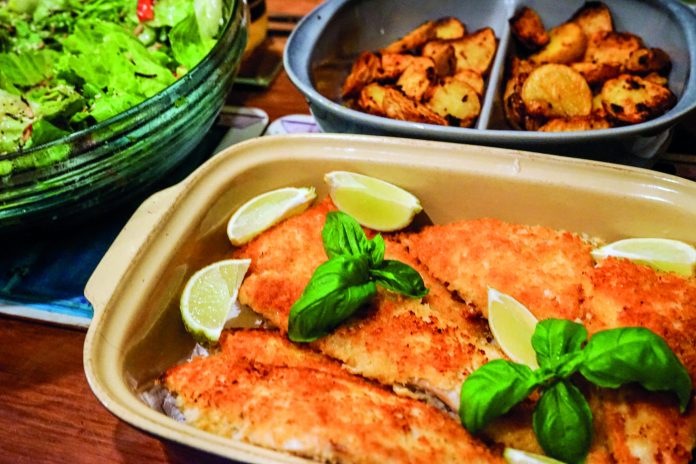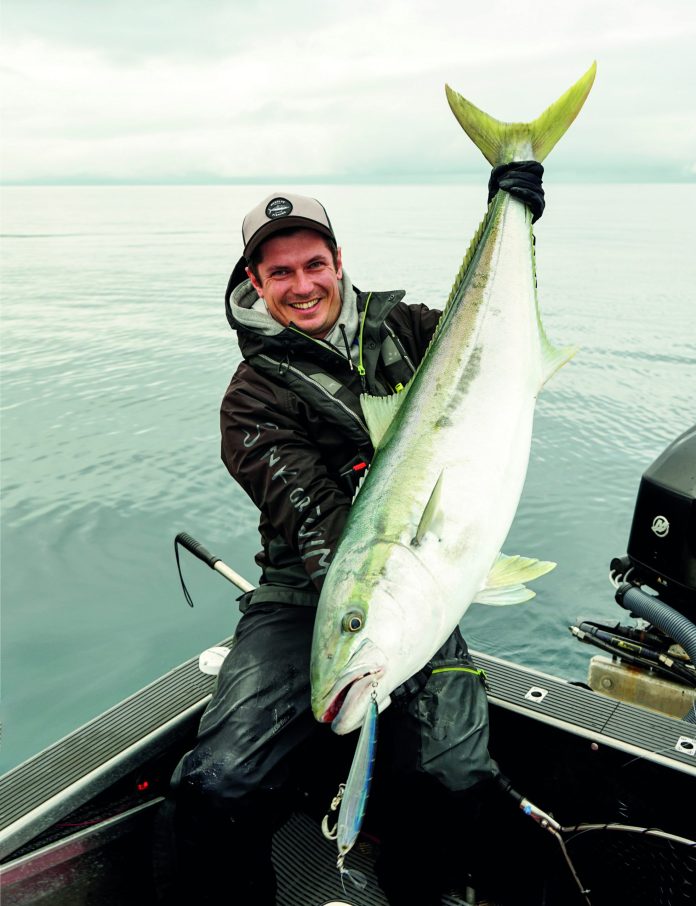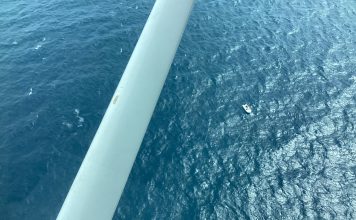The most spectacular demonstration of how good a bait squid can be occurred on a trip to the King Bank, off the Three Kings Islands in the mid 1980s. It was one of our earlier trips and we were still feeling our way with the amazing marlin fishing on offer there.
My friend Gary Miles Watson had caught a large squid the night before and wanted to rig it as a marlin bait. Gary was well known for his unique and sometimes wacky approaches to various fishing scenarios, but this time he at least followed a rigging process he’d actually seen and liked.
Amazingly, when finished, it skipped and splashed beautifully in our wake amongst the 10 (yes, 10!) lures we were trolling, one for each angler on board. Even more amazingly, just minutes after it was deployed a marlin came in, picked it out and absolutely smashed it, before leaping off towards the horizon.

In fact, I should say ‘smoking off’ because that’s what Gary’s Daiwa Sealine 900H was doing, a thin plume of grey-black smoke emanating from his star-drag reel’s overheated drag washers!
As it turned out, Gary eventually lost that fish, but I’ll always remember just how decisively that marlin chose his squid bait from amongst all that skirted plastic!
Fast-forward almost 40 years and I’m embarrassed to say we never tried that trick again, but squid baits have been responsible for plenty of other impressive catches. Let’s look at some of the possibilities…
Broadbill swordfish
Many of the broadie rigs I’ve seen deployed over the years have been armed with squid – big ones – sometimes ‘nude’ and sometimes partially covered with a plastic lure skirt, often luminous. All have been well secured from the mantle’s tip, followed by cross stitching along the body’s length, taking special care to stitch the mantle to the tentacles.
As is usually the case, fresh is best, but large squid can be hard to find sometimes. Fortunately, some of the better fishing stores stock large frozen squid, which is a worthwhile backup option.
Yellowfin and bluefin tuna
Squid can be very effective bait for big tuna, especially live squid. However, I’ll always remember a trip I shared with Graeme Sinclair and the Gone Fishin’ TV show team many years ago. We’d had a tough time of it, but then a frantic yellowfin boil-up occurred – around the hull of a boat drifting around 60 or 70 metres away. This saw multiple rods becoming well bent on the neighbouring vessel, while our own frisky mackerel baits remained unmolested. It was very frustrating.
Then Graeme attached a dead squid to a hook with a two-ounce ball sinker sitting on top, and hurled it towards the other boat. It had barely hit the water when it was smashed, and next thing Graeme was fighting a decent yellowfin. This catch saved our trip and the episode, despite the unusual presentation!
For those interested in live-baiting squid for tuna, they are best attached from the tip of the mantle, either bridle rigged or hooked directly. Just avoid using overly large hooks and too-heavy traces. (Just a metre or two of 60-100lb fluorocarbon leader is sufficient for yellowfin, while three to five metres of 250-300lb fluorocarbon is better for bluefin, due to their sharper teeth and greater weight.) A 2-8oz sinker can be added to ensure the squid is presented at a specific depth.
Kingfish
While squid can also be super-effective on kingfish, especially live ones, catching and keeping a bunch of squid alive is problematic, as they often take chunks out of each other whilst in the live bait tank
The rigging required is similar to what’s used for tuna: four to five metres of 80-150lb nylon or fluorocarbon, often with a 4-8oz ball sinker incorporated in the rig to get it down. Again, the squid should be hooked through the tip of its mantle so it stays alive for longer.
Deep water denizens
As usual, fresh is best when it comes to bait, but decent-sized frozen squid aren’t far behind. A squid is shaped to be easily swallowed and is also tougher than some other frozen baits, helping it to resist ‘pickers’ (such as tarakihi) until a hapuku, bass or bluenose comes along.

The squid should be hooked just once or twice through its upper mantle with a 11/0 to 13/0 circle hook, with the hook point left well exposed so it can slide into position around the fish’s jaw hinge.
If the squid aren’t especially big, try using two or even three at a time to make them a more worthwhile meal.
Snapper
I’ll always remember Kydd Pollock, the son of the legendary charter skipper and fisherman Rick Pollock, telling me that snapper cannot refuse squid. How did he know this? Well, he worked at a snapper-breeding facility on Kawau Island and as all good fishos do, he liked to experiment. Interestingly, he went on to say that while they could never pass up a squid dinner, somewhat perversely, it proved to be so rich that the snapper often regurgitated it later!

The key factor to consider when using squid for bait is its size. Ideally, I prefer the squid to be whole if possible as the wafting tentacles play a big part in its attractiveness. The overall length of a whole squid suits my usual fixed two-hook rig, too and the tapering mantle lets me make two or three half-hitches with my trace around its tip, securing the bait better (see the pic nearby).
The main things to remember when using whole squid are:
Try to snood the ‘keeper hook’ at a distance that covers the bait’s length effectively without leaving undue slackness between the two hooks.
Roll the circle hooks along the squid’s length, rather than placing them crossways, to avoid the hooks’ gapes becoming choked.
Ensure the main hook is inserted so it enters the squid’s mantle and exits at the tentacle clump, helping to hold the two parts together.
Half-hitch any small stray-line sinkers to the bait, turning the baited rig into a single unit, giving it a more realistic presentation as it sinks and washes around.
However, if the only squid available are too big to be used whole, they need to be cut into smaller offerings. Snapper don’t have hands, so no ‘pieces of toast’ shaped baits, please! Instead they should be slender for easy swallowing and ideally include some tentacles, as this is the most attractive part of the squid. And if there are no tendrils, make some with your knife, as shown.
Ledger rigs for snapper and tarakihi
Again, it pays to keep squid baits relatively small and slim so they are easily ingested. Having said that, I find strips of squid mantle tend to lose their scent relatively quickly, so using tentacle clumps instead is a no-brainer. They generally attract more bites. Hook squid pieces just once to avoid choking the gape of the circle hook.
Finally, there is usually quite a difference in mouth size between tarakihi and snapper, so I suggest using 1/0 to 3/0 hooks for tarakihi and 5/0 to 7/0 hooks for snapper.
As a bonus, any fresh squid remaining at the end of the session can be taken home and eaten. Yum!






















